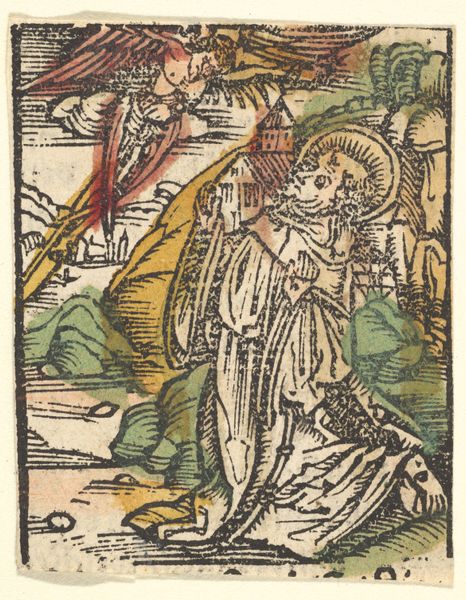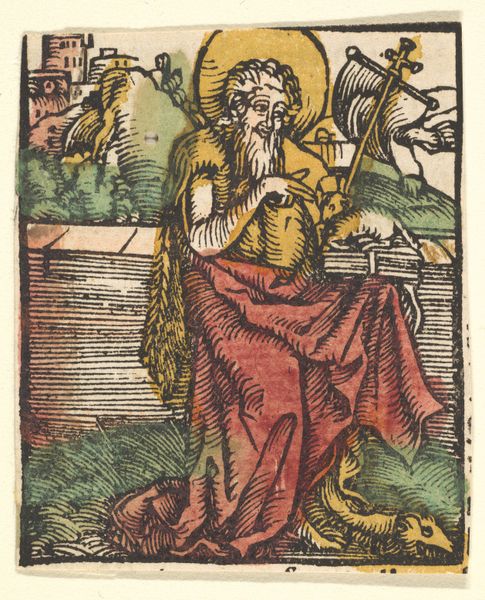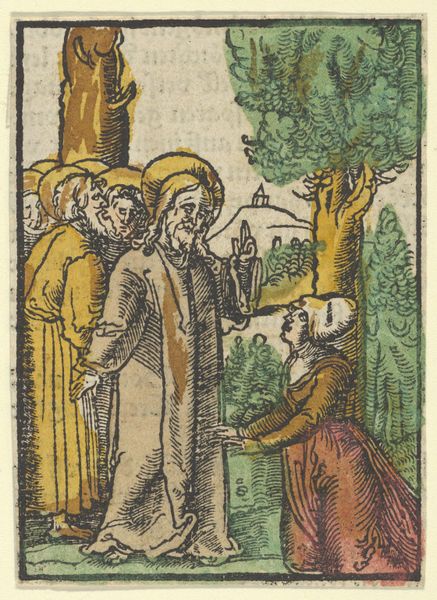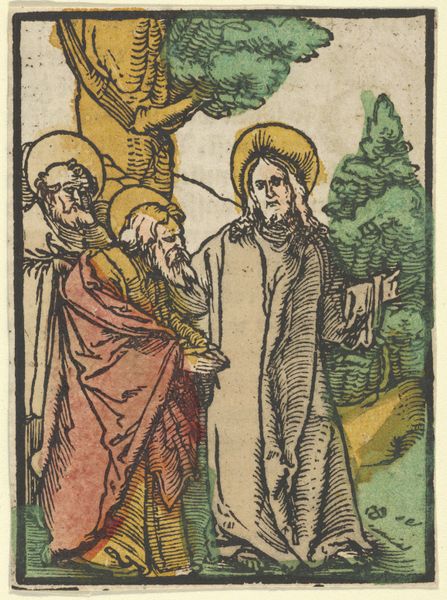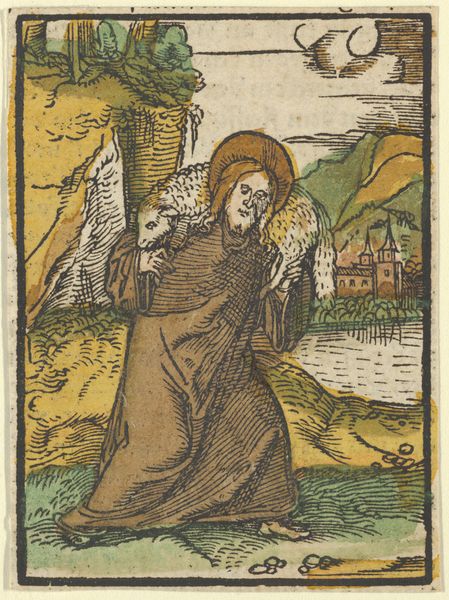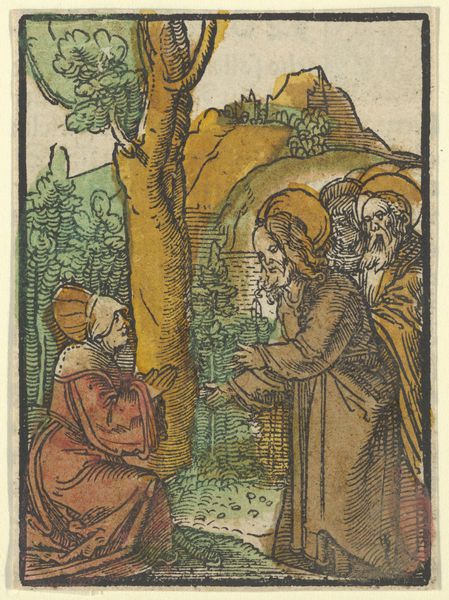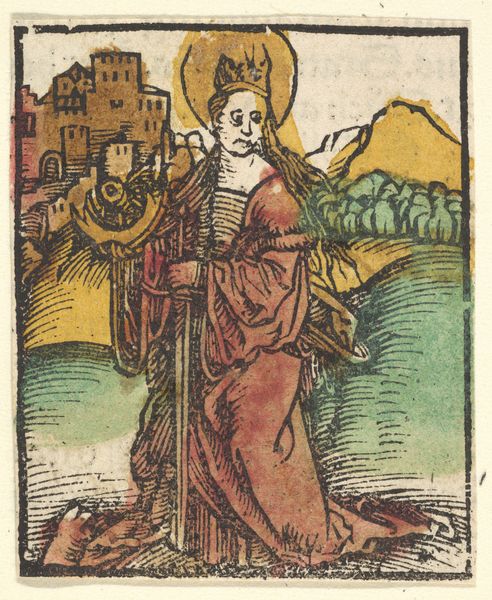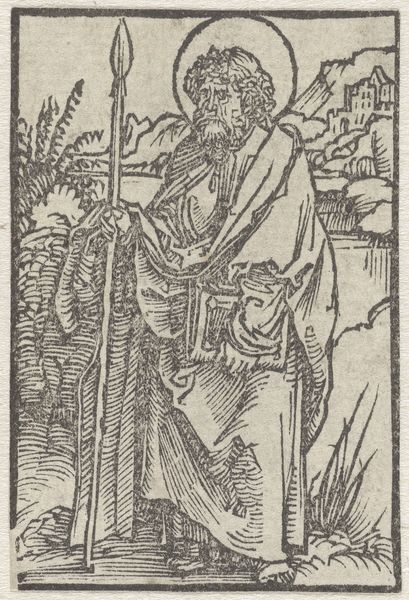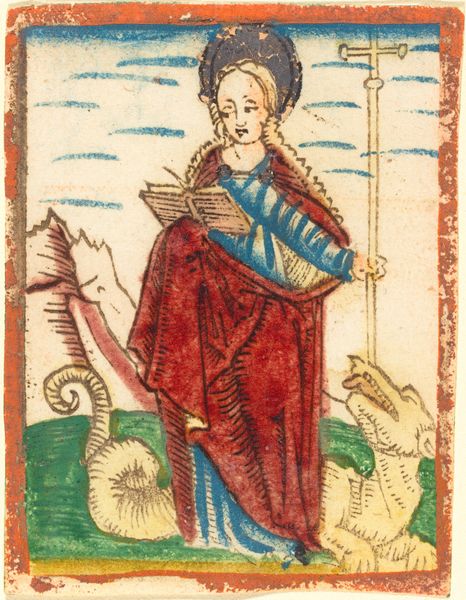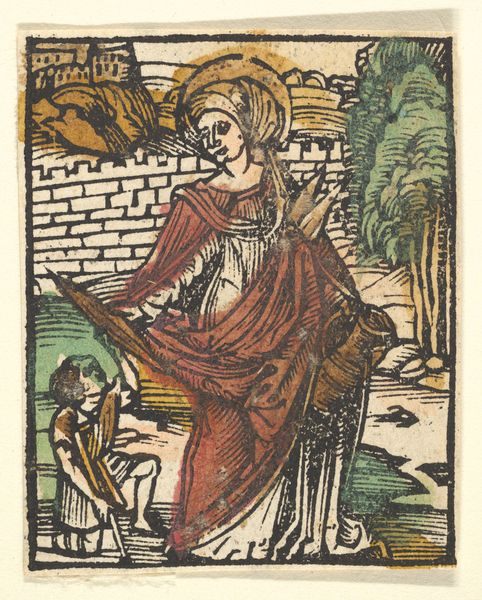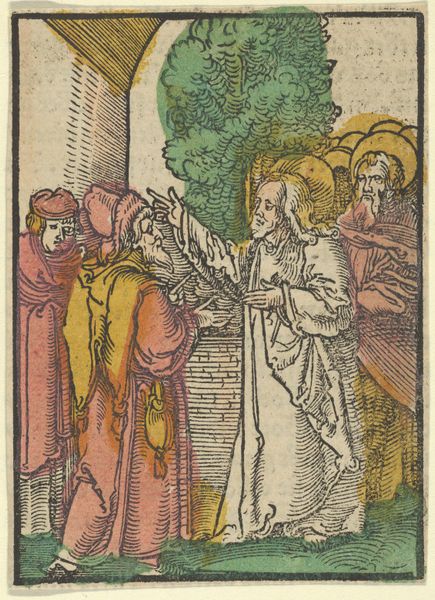
Christ Deploring Jerusalem, from Das Plenarium 1517
0:00
0:00
drawing, print, woodcut
#
drawing
# print
#
landscape
#
figuration
#
coloured pencil
#
woodcut
#
cityscape
#
history-painting
#
northern-renaissance
#
building
#
christ
Dimensions: Sheet: 3 11/16 × 2 11/16 in. (9.4 × 6.8 cm)
Copyright: Public Domain
Editor: Here we have Hans Schäufelein’s "Christ Deploring Jerusalem, from Das Plenarium," a woodcut from 1517. The palette is surprisingly gentle, even pastel-like. Despite the story it illustrates, there's a sense of calm emanating from the landscape, juxtaposed with Christ's obvious distress. What do you see in this piece, in terms of its message and context? Curator: I see a potent intersection of faith, political critique, and burgeoning humanism characteristic of the Northern Renaissance. The artist depicts Christ not as a divine figure removed from earthly concerns, but as a deeply feeling, vulnerable man lamenting the fate of Jerusalem. The choice of the woodcut medium itself speaks volumes. Editor: How so? Curator: Well, the printing press facilitated the rapid dissemination of ideas, and artists used this to engage with their audiences on theological and socio-political issues. Christ's lament can be interpreted as a critique of religious institutions of the time and power structures that oppressed the common person. Editor: So you’re saying this image transcends a simple bible story and speaks to contemporary issues? Curator: Precisely. Notice the cityscape in the background, with those intricate buildings rendered in such detail. This emphasis humanizes the city and implies that salvation rests on the actions of its people, and it connects to ongoing conversations about the role of humanity in achieving grace during the Reformation. The artist seems to be advocating for introspection and accountability. Editor: I never thought of it that way! It is incredible to think about art sparking discussions about religion, identity and change. Curator: Indeed, the artist uses religious narratives to question prevailing social and political conditions. So, it’s not only art for devotion, it's a prompt for crucial public debates about faith and governance. Editor: I see it now, it's a perfect piece to trigger discussion on many important matters. Curator: Precisely, its layered meanings invite ongoing investigation.
Comments
No comments
Be the first to comment and join the conversation on the ultimate creative platform.
